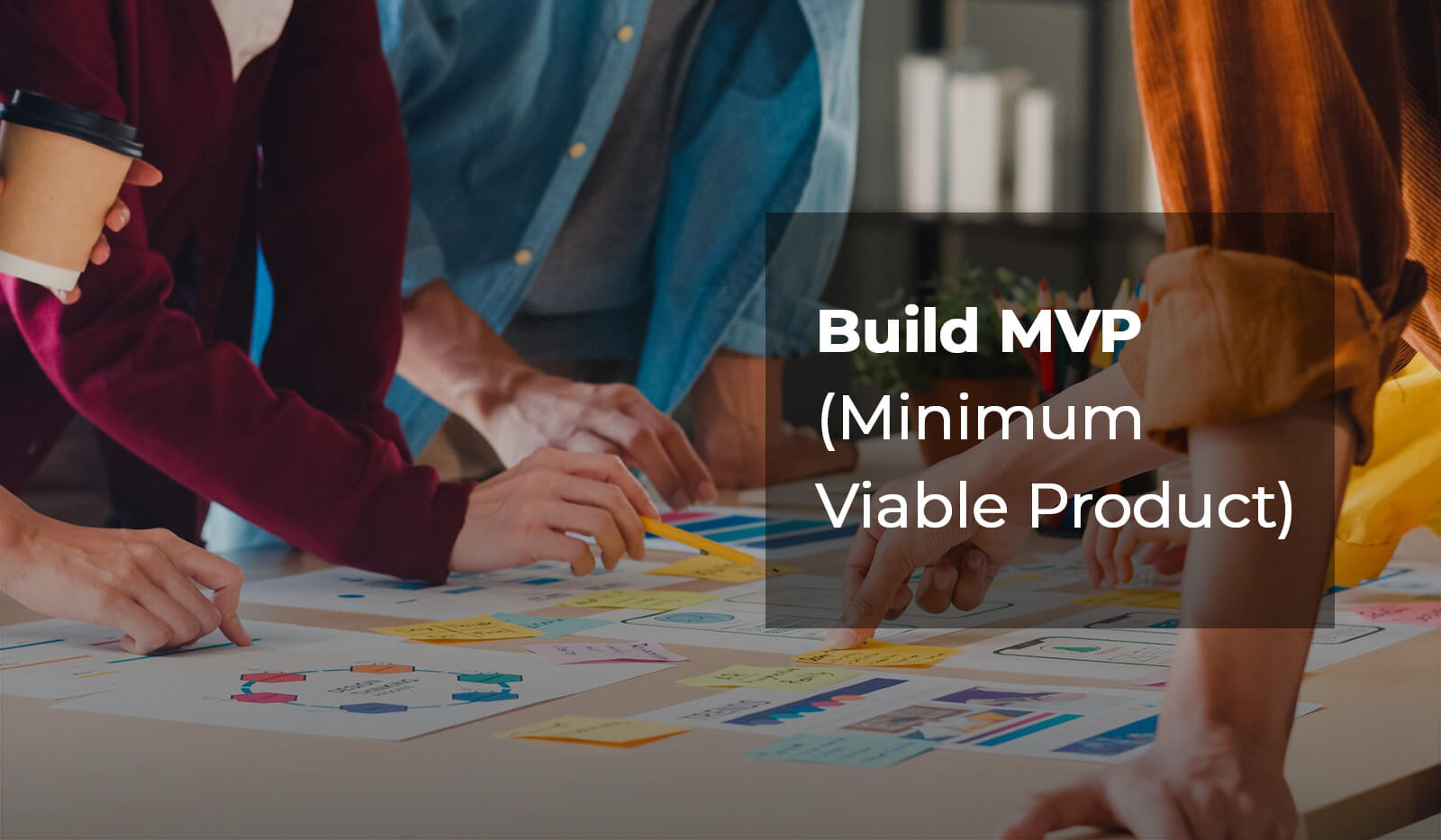How to Build MVP (Minimum Viable Product): Complete Guide by Neetable

The world is running on smartphones. Every month new apps are added to the app store. You can choose between millions of iOS and Android apps to do anything from planning and scheduling tasks to finding where you parked your car.
According to emarketer.com, the average daily time spent by a user on a mobile app is more than 80%. Not only does the app market have huge business potential, but users are now more willing than ever to trust and make use of the capabilities that come with different applications.
The catch here though is that only the strongest app will survive. Apps come and go, but there are only a few that continue to hold their place in someone’s mobile device. Due to factors like a poor business model, lack of funding, and unattractive UX most companies fail to beat the competition.
But how can you overcome this? How to create a product that users are willing to buy? The answer is MVP.
What is a Minimum Viable Product or MVP
An MVP or a Minimum Viable Product can help you reach your customers faster. MVP is the most basic version of the product you want to launch. It comprises just enough features that are needed to induce a customer to try it out.
MVP is not to be considered as the cheaper version of a fully developed app. Rather, it can be considered the smarter version, although much less time and money are required for its development.
A minimum viable product allows you to test the response to your app by its prospective users. Using the information obtained from MVP usage, you can analyze if the app has been effective in fulfilling its purpose, where it is lacking, and what features can be added, or improved. Building an MVP helps in making the final product better.
What are the benefits of minimum viable product?
Core Focus
An MVP focuses on only one idea. Building an app that includes only the main features reduces the cost of app development. It allows the flexibility to test and modify the app with minimal risk.
Test early
In any business, an opportunity to test early will help in avoiding failures and losing investment. MVP allows you to test the feasibility of your idea from the very beginning.
Gather feedback
A unique feature of an MVP is that it gives an opportunity to understand and utilize feedback from prospective customers and what they wish to see in the app.
Market validation
Using an MVP strategy, your concept can be designed to achieve product/market fit. A successful app can be validated by using customer insights, presenting it to your users, and demonstrating how it differs from other projects in your niche.
Faster development
MVP ensures a faster-to-market strategy. It will be easier to reach your customers faster and receive quick feedback. By doing this you will be able to improve your application and release it rapidly.
Budget-friendly
An MVP is a great way to enhance the mobile development strategy without incurring a significant development cost loss.
The Purpose of a Minimum Viable Product
Aside from the mentioned MVP benefits for business, there is another reason why companies prefer to develop a minimum viable product. MVP is a necessary advantage for companies that seek angel investment.
As an entrepreneur, getting an investor to believe in your business is the beginning of your journey. The initial step towards this attempt is to come up with a clear, concise, and effective business proposal that details your business's goals and purpose.
But instead of wordy and hours-long presentations what if you had a product that can prove the success of your unique business proposition? To put it simply, imagine a vendor wants to sell you a service. When will you be willing to purchase the service? When you are confident that it functions as stated and has features that contribute to usability.
For investors, a viable, tangible product is better than a theoretical concept, since it's already been proven that the product can survive the market. Therefore, there is a greater possibility of acquiring profit or reaching an ROI for the investor.
The MVP Development Process
MVP development involves the following processes:
Market research
Research is an important step towards the success of your MVP startup. Insufficient market research is one of the reasons most startups fail. We do an extensive study on all product-relevant aspects by acquiring fact-based data on the industry and niche market, target user preferences and usage, and competitor strategy and app functionalities.
In-depth market analysis can help to identify:
- if there is a need for the service, and
- how it can uniquely solve a real user problem
Express your idea
We focus on a core idea based on:
- what problem the product will solve
- how to achieve maximum satisfaction of user needs
- how to ensure a satisfying user experience
- unique features which will set it apart from its competitors
Define user flow
Understanding the objectives of a prospective customer and how your product can achieve these objectives is essential to the creation of a successful app. To design a good app, it is essential to picture navigating the app from a user's perspective.
Using this concept, a user flow can be designed that maps the path from the entry point of the app to its final stage. We define various process stages in the user flow that the user encounters as they progress through the app.
By designing a user flow, we help visualize the features and functionalities that are required to enable a satisfying user experience.
List the features
Following the user flow design, we can list the features that are to be included in each stage of the app. Having identified the features necessary to provide optimal performance, the next step is to prioritize them.
Features with high priority are selected for the development process. By building an MVP, we aim to develop an app that has a simple and easy-to-use interface with a basic set of features.
Develop your MVP
We can now proceed to build our MVP. Using our research data, user flow, and an array of essential features, we can build an MVP that is customized to meet user needs and promises an engaging experience.
It's all a process
Build-learn-iterate. Once the MVP is launched its performance needs to be thoroughly analyzed. Customer feedback helps us determine if the product is acceptable in the market, if it competes with other products, etc.
User feedback provides insight into where the product may lack and what features may not be required. As with the initial version, we improve our product, test it, measure the quality, and test again; the process continues until the product is finished.
MVP Business Examples
The MVP approach is a tried and tested approach. Many established companies like Amazon, Facebook, and Zappos began their success journey with MVPs.
A great example is Dropbox. Dropbox came up with an innovative MVP strategy. Instead of developing a physical MVP, they created a video presentation that demonstrated their product’s first build, explaining the core value proposition and how users could easily upload and share files across devices.
Businesses can use an MVP to determine if their idea will work before pitching it to investors. By focusing on the MVP approach, you can have clarity on what your product is supposed to do, thus delivering a top-notch product.
To summarize …
-
You have an idea based on an assumption (for e.g., let’s assume people want so-and-so service)
-
Study the market and collect data based on all aspects of the product, including the industry, target user preferences, competitor product services, etc.
-
Instead of going through an expensive and elaborate development phase (that may or may not fail in an untested environment) we build a very basic solution.
-
We then make the service available to the user.
-
We use customer insights to understand if they are satisfied with the product, or if any changes are needed.
-
And finally, we build a product that achieves product/market fit.
Request a Quote
Categories
Popular posts
Best Practices for Software Product Engineering Every CTO Should Implement
2023-14-18How to Build Your Own On-Demand Carpooling App Services?
2023-08-25How to Start an On-Demand Fuel Delivery Business: A Comprehensive Guide
2023-07-28Empowering Miners: How Fleet Management Apps are Transforming the Mining Industry?
2023-07-21A Complete Guide to Develop a Food Delivery App for Restaurants in 2023
2023-07-08Mobile Apps Transforming the Travel Industry: A Game-Changer in Travel Planning and Experience
2023-07-07
